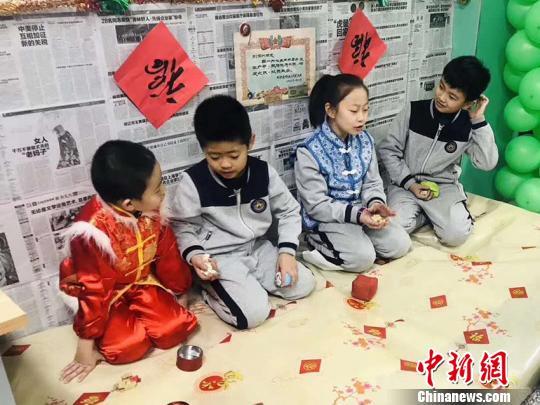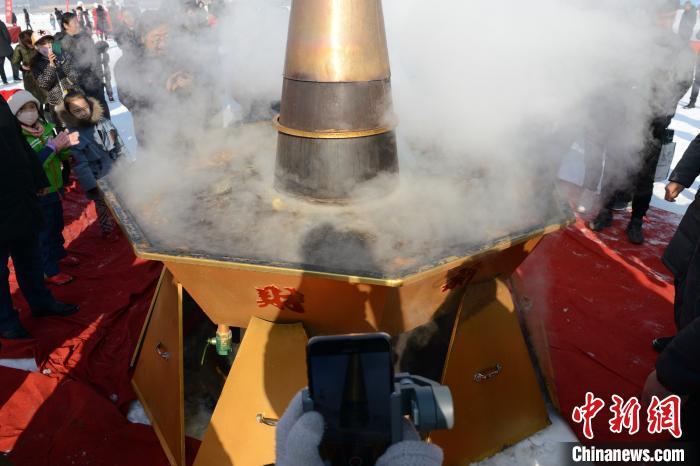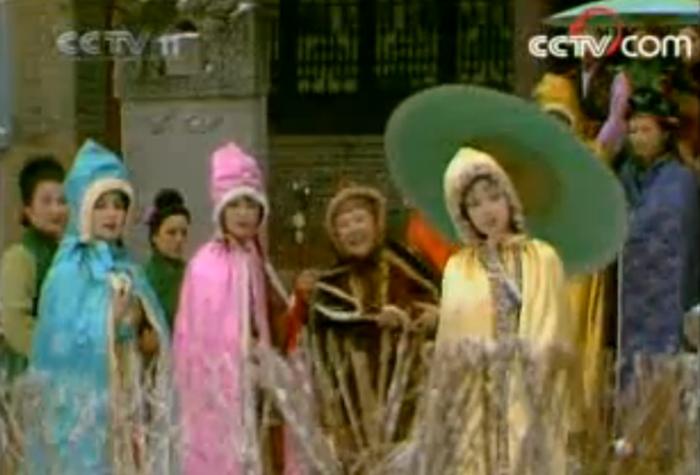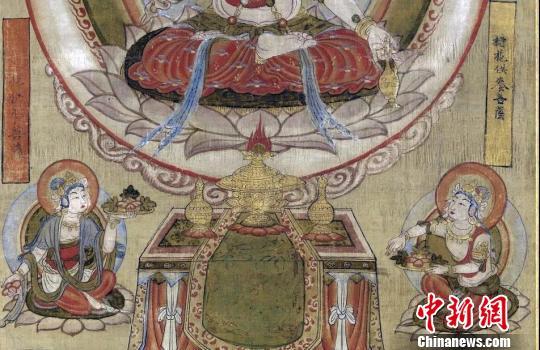No heating, no down jacket … How did ancient people spend the cold winter?
BEIJING, Jan. 15 (Reporter Shangguan Yun) Every winter, the howling cold wind becomes the standard, especially in the northern part of China, where it is often freezing, and people have to wrap themselves up from head to toe when they go out.
Even now, how did people spend the winter in ancient times when the material conditions were relatively poor and there was no heating?
How to keep the house warm? Get to know the fire wall and fire resistance
One winter many years ago, Bai Juyi, a great poet, wrote a poem, "I know that the snow is heavy at night, but I can hear the sound of bamboo breaking", lamenting that the bedding is cold and the heavy snow has broken the bamboo, which shows that the weather is cold. In the cold winter, a warm house is undoubtedly the best way to keep warm.

Data map: Students are experiencing the northeast folk fire kang. Photo by Liu Dong
In ancient times, fireplaces and fire walls were all good ways to keep warm. People build a house wall into a hollow sandwich wall, and a fire tunnel is dug under the wall. There are air holes at the end of the fire tunnel to discharge smoke, and the charcoal port for adding fire is under the eaves of the house. After the charcoal fires, the heat can be transferred to the whole house along the sandwich wall. This kind of sandwich wall is called "fire wall".
The farther north, the colder and longer the winter is, and the "fire kang" has become a good way to resist the cold. Kang has a stove mouth and a smoke mouth, which are used for heating and smoke exhaust respectively. In the north of China, the stove mouth of the kang is mostly connected with the stove, so it can keep warm when cooking.
The heating facilities in the palace are more exquisite. For example, in the Western Han Dynasty, there was a greenhouse hall in the court, which was equipped with various warm-keeping facilities. "Miscellanies of Xijing" records: "The greenhouse hall is painted with pepper and mud, and the wall is covered with splendid flowers, with cinnamon as the main part, and a fire mica screen … …”
At that time, the palace where the Queen lived was called "pepper room temple", and the mixture of pepper and mud was used as the material for painting the walls, which not only allowed the temperature to be measured, but also had a faint fragrance.
If there were no conditions, the ancients would use the warm sunshine as much as possible, and when building a house, they would choose the orientation of "sitting north facing south" to let the warm sunshine shine into the house; Then, put a bamboo ceiling or other "floor" on the roof to prevent dust and keep out the cold.
Warm wine and hot pot … … Winter fancy diet

Data Map: People are waiting for boiling around the "Ice and Snow Hot Pot". Photo by Liu Wenhua
In winter, the human body has a high demand for calories, so the ancients would choose to eat some warm food as much as possible. Such as ginger, mutton and dog meat.
The ancients thought that drinking alcohol could warm the body. Bai Juyi mentioned in "a suggestion to my friend liu", "Green ant new baked wine, there’s a stir of red in the quiet stove. There’s a feeling of snow in the dusk outside, what about a cup of wine inside?? " Scholars sit around the fire in the cold winter, make a pot of hot tea or wine, and have a drink with friends at night, which is also very comfortable.
Hot pot is naturally a standard in winter diet. There is a saying that hot pot was called "antique soup" in ancient times, and it was named after the "splash" sound when food was put into boiling water.
By the Song Dynasty, eating hot pot was more common. In Lin Hong’s cookbook Shan Jia Qing Gong in the Southern Song Dynasty, there was an introduction similar to eating hot pot.
Warm hat, gloves and coat … … Tips for keeping clothes warm
In winter clothes, modern people have cotton-padded jackets and down jackets, but the ancients were not so well treated. It is said that in winter, poor families can only sew catkins and reed flowers into clothes or quilt covers to keep out the cold. After cotton was planted and applied in a large area, the situation was better.

In the TV series A Dream of Red Mansions, people’s costumes after the snow. Image source: 87 version of "Dream of Red Mansions" video screenshot
Wealthy people with well-to-do families will choose to make coats and cloaks with animal fur, so as to keep out the wind. Hands and feet are prone to frostbite, so the ancients made various styles of gloves, some of which were short gloves with fingers exposed, and some of which could wrap all the fingers with patterns embroidered on them, which was very fashionable.
The warm-keeping measures for the head are even more varied. In the Tang Dynasty, there was a kind of "Fanmao" that came from the western regions. It was also called "ear cap", and there were ear protectors on both sides of the hat, which hung down just to protect the ears in winter. In the Yuan Dynasty, wealthy women used a trowel to keep warm, and there were "lying rabbits" and "Zhao Jun sets", which had similar functions.
No matter how warm the room is, people still have to go out. At that time, riding a horse or riding a carriage was a faster mode of transportation. When traveling in winter, people would wear hoods to keep out the wind and sand. It is said that Kublai Khan had many warm hats of skin and silver mouse.
In addition, there is something called "ear warming", which is made of fox skin, a bit like earmuffs used by modern people.
"Cold artifact"? Soup woman and hand warmer can have.
While paying attention to keeping warm, people will also have various small objects called "cold-proof artifacts" at hand, such as "soup woman", hand stove, foot stove and so on. In addition, families with conditions use artificial charcoal for heating, and aristocratic homes pay more attention to it.

Data Map: Dunhuang Research Institute combed and summarized the life interest of ancient people in the statues, murals and Dunhuang suicide notes in the ancient Dunhuang Grottoes, that is, decorating incense burners to add fragrance to winter. The picture shows the incense burner displayed in the silk painting "Shuiyue Guanyin Bodhisattva (partial)" unearthed in Dunhuang Tibetan Sutra Cave. Photo courtesy of Dunhuang Research Institute
Su Shi, Zeng Zeng, gave an old man a "copper leg warmer", and wrote to tell him how to use it: fill the hot soup, plug the water inlet, wrap the cloth sheet, and sleep very warm at night. Judging from the efficacy, it is a bit like a hot water bottle today.
If you are worried that it is not warm enough, you can consider going to the stove or smoking cage. The shapes and sizes of smoking cages vary: the big ones can reach hundreds of kilograms; Small ones can be lifted, and elegant people will carve exquisite patterns on them, which is quite artistic.
Hand-held stoves can be called "warm babies" in ancient times, which can be carried around, and also have the elegant names of "sleeve stoves" and "holding stoves"; There is a hand stove, and naturally there is a foot stove. As the name implies, this is used to warm feet. Others use a "fuming stove" to adjust the room temperature, and put some spices in it to make the room full of incense after heating, killing two birds with one stone.
In fact, the ancients did not have heating and various advanced measures to keep out the cold, but they combined with real life and invented many items to solve the heating problem, and many designs have been extended to the present. (End)